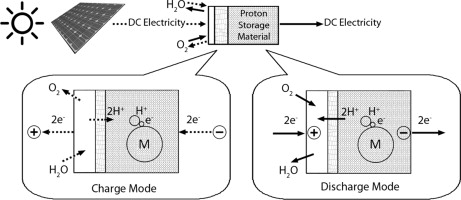
Image via RMIT
Researchers at RMIT University in Australia have developed a method to create a proton flow battery to progress the creation of hydrogen power. A composite electrode was found to have adequate proton and electron conductivity that could potentially replace the presence of lithium in batteries.
The team of scientists investigated how the integrated use of a reversible proton exchange membrane (PEM) fuel with metal-hydride hydrogen storage could be an efficient way to generate energy. The overall concept stores protons that are produced by splitting water. This hydrogen splitting could replace lithium and other energy sources in battery-powered electronics. The proposed system eliminates the production, recovery, and storage factors of hydrogen gas that suppress the efficiency of normal hydrogen-based storage systems for electrical energy.
This theory combines all favorable aspects of the hydrogen fuel cell and battery-based electrical power. John Andrews, the head scholar at RMIT’s School of Aerospace, Mechanical and Manufacturing Engineering, stated that “as only an inflow of water is needed in charge mode — and air in discharge mode — we have called our new system the 'proton flow battery.' ” When batteries are powered with protons, a more ergonomically sound system of energy than using lithium ions is produced.
Andrews went on to explain that “hydrogen has great potential as a clean power source and this research advances the possibilities for its widespread use in a range of applications — from consumer electronic devices to large electricity grid storage and electric vehicles.”
For experimentation purposes, the metal hydride electrode is brought into a PEM fuel cell. The protons that are made from splitting water are combined with electrons and metal pieces into one whole electrode of a fuel cell. A solid metal hydride is created as the energy storage.
All discoveries recorded thus far by the team at RMIT have been published in the International Journal of Hydrogen Energy . The published theory explains the full concept behind the proton flow battery and includes experimental proof to support the argument. The team at RMIT will continue to develop their findings.
Story via Phys.org
Advertisement
Learn more about Electronic Products Magazine





